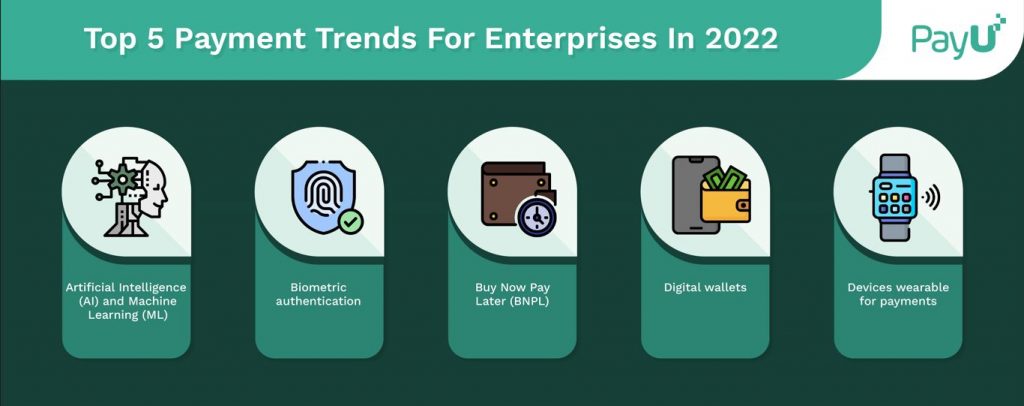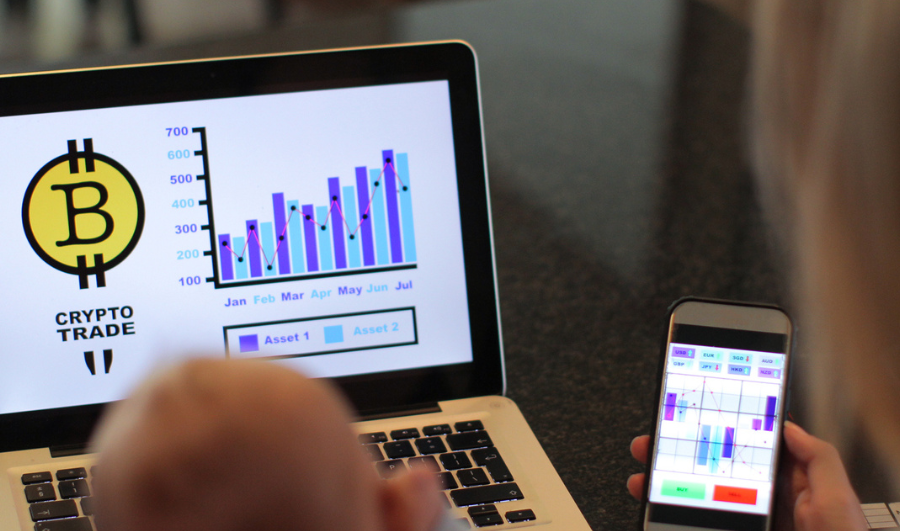You have been witnessing how digital transformation has revolutionised almost every vertical, and digital payments are no exception. It has offered contactless in-store and flexible online payment choices. People now want a frictionless experience from the top payment gateways during their transaction or checkout. Consumers prefer flexibility and innovation to conventional ways. In the past few years, you have seen many spheres undergoing significant changes, right from education and healthcare to logistics and retail. Payment technology links all these key business areas. Digital payment in India has accelerated its rate to 53% in 2022 from 38% in 2021 when merchants want to expand their digital payment options due to increasing consumer demand.
Digital transactions have evoked some payment trends that have been forecasted to affect both businesses and consumers. In this article, we will highlight the top five payment trends for enterprises in 2022.
Payment Trends for Enterprises in 2022: Top 5 Trends to Stay on Top Of
Now that we know the significance and how payment solutions have evolved in India, let us now look at the top five payment trends that are prevalent for CEOs, CFOs, entrepreneurs, eCommerce giants, freelancers, online merchants, SMBs, and web developers, alike:

- Artificial Intelligence (AI) and Machine Learning (ML)
AI has been a proven game-changer in the payments industry. It has offered to use the technology in innovative ways, such as voice-activated payments and chatbots for providing reports, balance notifications, and round-the-clock customer service to its users. AI and ML-based platforms help in reducing payment fraud, help interpret insights, and scale up as per the customer requirements.
AI plays a significant role in regulatory technology. The Machine Learning based AI applications process massive data, optimise payment processes, and offer payment security in banks and financial institutions. By 2027, the AI and ML industry is expected to be worth $17,440 million, with a CAGR of 17.9%.
- Biometric authentication
The biometric verification offers a two-factor payment authentication. It includes methods such as fingerprint scanning, facial recognition, and iris recognition to make a payment. Implementing this technology into your payment stack reduces fraud and makes the payment gateways safe and secure for both the business and the customer.
Its unique way of assuring safety and security in digital payment systems helps build trust and loyalty among customers. The rising identity thefts and payment frauds have been largely reduced with biometric authentication, ensuring reliability for all the online payment gateways in India.
- Buy Now Pay Later (BNPL)
Enterprises have been incorporating the Buy Now, Pay Later (BNPL) option into their payment solutions, and the trend is on the rise due to its usability. With the BNPL option, consumers can split a product or service’s cost into instalments so they can afford to purchase more items.
31% of consumers consider BNPL as a feasible option over credit cards. For its versatility, BNPL has been used in industries such as automotives, gaming, healthcare, and hospitality. While automotive dealers use the BNPL option to reduce the friction in financing, empowering the buyers to go for high-end models, health care providers use BNPL to give patients flexible payment options for their pharmaceutical and medical services.
- Digital wallets
A digital wallet lets you do everyday transactions virtually and also stores users’ payment information such as credit and debit card numbers and bank account details to be accessed easily when making a payment. Digital wallets support the popular Near Field Communication (NFC) technology that allows nearby devices to communicate with each other and share data.
The increased acceptance of digital transactions will propel the use of digital wallets in the coming years. By 2023, it has been estimated that 4.4 billion global consumers will pay with a digital wallet, summing up to 52% of eCommerce payments and 30% of POS payments globally. Research says that by 2025, the number of unique digital wallet users will exceed 4.4 billion globally.
- Devices wearable for payments
The wearable tap-and-go technology integrated into smartwatches, wristbands, or rings is a secure and error-free method for customers to purchase products and services. The wearable technology trends in organizations will be fueled by social distancing norms from the ongoing pandemic. Private banks have also been launching wearables and contactless payment gadgets.
As per comprehensive research, the market for wearable technology is expected to reach $1.37 trillion by 2027 and the global contactless payment sector will amount to $18 billion by 2025.
And The Trend Goes On…
Digital transactions are the future of payments. The top 5 payment trends for enterprises in 2022 mentioned above will play a major role in India’s vision of becoming a cashless economy at a never-before rate. By 2026, the digital payments industry is expected to grow to $1 trillion.
PayU India is one such payment solution provider that enables businesses to collect online and offline payments. It has a vast reach and supports 150+ payment modes and has been catering to 5 lakh+ businesses in India. It is known for its seamless checkout experience and no-code and omnichannel payment solutions. For a hassle-free digital transaction, sign up with PayU India today!
FAQs
PayU is an easy and secure online payment tool and is a leading financial services provider in the global market.
Yes, the PayU India platform supports international and multiple currency payments subject to the banking partner’s discretion.
The countries that support PayU India are Argentina, Brazil, Chile, Colombia, Czech Republic, Hungary, Mexico, Nigeria, Panama, Peru, Poland, Romania, Russia, South Africa, and Turkey.
PayU is a payment gateway and only charges a transaction fee of 2% + GST on every transaction.
Technologies such as AI, ML, cloud, and data analytics have initiated cybersecurity to prevent debit and credit card fraud.






